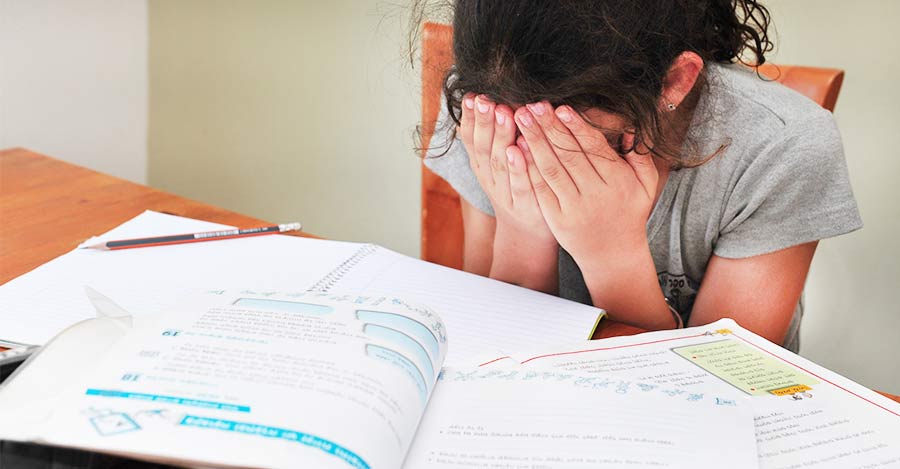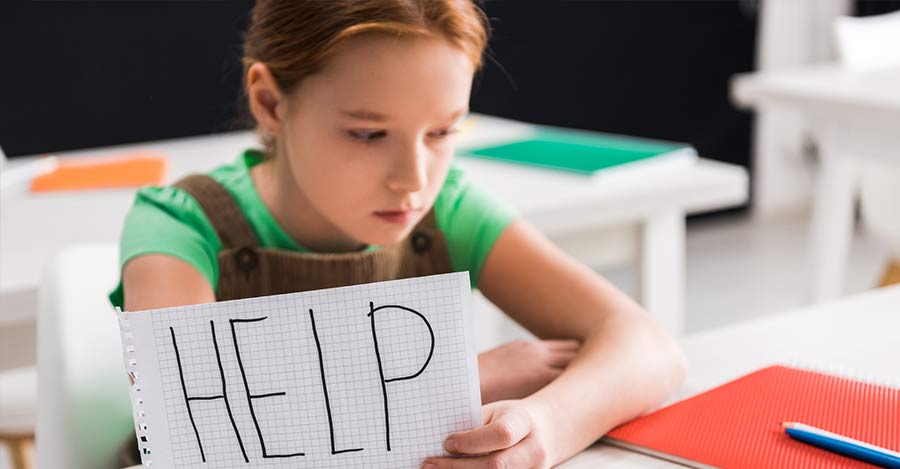Bullying and Students With Disabilities
- Last Update:
In a school setting, bullying often involves an individual or group that chooses to misuse their power or perceived power. They do this over a person or group of people who typically feel they cannot stop the bullying. Additionally, in many instances, bullying can be covert and not obvious.
Unfortunately, bullying for any reason and in any form often has immediate or long-term effects. We spent hours pouring over studies on the topic.
We want to tell you how bullying affects students, including those with disabilities.
How Common Is Bullying In The USA And The World?
Many sources indicate that the bullying of students is common no matter the country.
According to the UNESCO Institute of Statistics, one-third of the world’s youth is bullied. Of course, certain countries have higher bullying rates than others. For example, in Tajikistan, only 7% of the country’s youth are bullied. In contrast, in Samoa, 74% of students are bullied.
Yet, you also need to note a few shocking US student bullying statistics. Statistics from the Pew Research Center and federal statistics sourced from the National Center for Education Statistics, Bureau of Justice, and Centers for Disease Control and Prevention have found the following:

- Approximately 20% of students between the ages of 12 to 18 experience bullying in the US.
- About 19% of students report experiencing bullying on school property annually.
- 43.4% of students report experiencing bullying in a hallway or stairwell at school. 2.1% report experiencing bullying in a locker room or bathroom.
- 21.9 of students experience bullying outside of school grounds. 15.3% experience bullying online or via text.
- Two in every three American teenagers have experienced cyberbullying.
- Only 46% of students between the ages of 12 to 18 that are bullied during a school year notify an adult at their school.
How Common Is Bullying If A Student Has A Physical Disability or Injury
There are very few studies surrounding student bullying and developmental disabilities. Yet, students with known disabilities are two to three times more likely to experience bullying.
Luckily, under section 504 of the Rehabilitation Act of 1973, alongside Title II of the Americans with Disabilities Act of 1990, a school must report harassment. When bullying becomes ‘disability harassment’, severe consequences can follow for those involved.
What Is Believed To Be The Relationship Between Bullying And Mental Health?

Unfortunately, there is a negative relationship between bullying and mental health.
Many students can develop mental health issues after experiencing bullying while attending school. The worse the bullying, the more likely a student is to experience mental health problems.
For example, students experiencing bullying are more likely to experience anxiety and depression. They’re also more likely to experience social withdrawal and self-esteem issues.
Additionally, many victims of bullying often feel lonely. Some can lash out because of how their mental health affects them.
Moreover, there isn’t a direct correlation between bullying and suicide.
Yet it’s believed that bullying can contribute to feelings of hopelessness and helplessness. These feelings are often involved in suicidal behaviors. Students who are victims of continued bullying are at a greater risk of developing suicidal tendencies.
What Are The Common Forms Of Bullying?

Contrary to what is often believed, there is much more to bullying than meets the eye. Many researchers have established that bullying is more complex than thought.
There are six types (or forms) of bullying, and since not all bullies are the same, this is unsurprising.
Many school bullies will use different tactics to intimidate and control their victims. The forms of bullying are:
- Cyberbullying.
- Sexual bullying.
- Physical bullying.
- Verbal bullying.
- Prejudicial bullying.
- Relational bullying.
How Can You Identify Bullying?
If a student is being bullied, there are a few signs you can look out for. It’s common for children who are being bullied to show signs of the following:
- Torn, missing, or damaged clothing, books, and other possessions.
- They have very few or no friends they spend time with at and out of school.
- Unexplained scratches, bruises, cuts, bumps, broken bones, or gashes from fighting.
- Appears to be afraid of going to school, riding the bus, and participating in sports at school.
- Loses interest in school work or often states they feel unwell with tummy aches, headaches, or the flu.
- Difficulty sleeping with or without nightmares.
- Feelings of helplessness with a declined interest in school.
- Changes in eating habits.
Physical Effects
According to many sources, physical bullying is a prevalent problem in schools. Approximately 90,000 school children suffer ‘intentional’ injuries yearly. Typically, these injuries are severe enough to warrant an emergency room visit.
Many children end up in hospital because of suffering injuries. Injuries include broken bones, concussions, stabbings, shootings, bruises, and falls.
Absenteeism
The more children are bullied, the less they want to attend school. When children are being bullied, they seek ways to skip school. Often without their parents knowing.
In the beginning, this could go unnoticed. That is until it becomes clear that the child is more away from school than they are attending school. When students skip school, it becomes easier to get into trouble. It’s also easier to develop bad habits that can go with them into adulthood.
Lower Grades
Since approximately 20% of students are bullied, it’s easy to see why they would have lower grades. When students skip school, they are not learning anything in their classes.
This leads to miss tests and late assignments, contributing to lower grades. Many studies have proven that the more bullying a child experiences, the lower their academic achievement.
Inability To Concentrate

Bullied students have a harder time retaining knowledge while at school. This is because learners experiencing bullying are always worried about when and where they may be bullied next. Thus they cannot focus on learning and suffer concentration issues.
It’s even known that when someone is bullied, it negatively affects the brain’s receptors. This commonly leads to depression and a lack of concentration.
An Increase In School Dropout Rates
Bullied students drop out of school far more often than those who are not. According to data, it’s believed that one in 10 people drop out of school because they were bullied. Many bullied students often miss out on opportunities before they finish their studies.
Additionally, some state that about 1.2 million students drop out of school annually in the US. Moreover, about 25% of freshmen never graduate.
The US Census Bureau has said that high school dropouts earn about $260,000 less than those who finish their studies.
Complete Guide for How to Deal on bullying sictuaction
We have found ways students, parents, teachers, and bystanders can help themselves and others who are experiencing bullying at school.
How A Bullied Child Can Seek Help

A bullied student should seek help by speaking with their parents or teacher. If a student reports the bullying, there is a greater chance of stopping the bullying. Should a student not want to talk to a parent or teacher, they can speak with a school counselor or a family doctor.
Or they can talk to a police officer if the situation warrants legal advice. There are also various helplines a student can use to seek help and advice.
Bullied children should also consider talking to a close friend. A friend who can go with them to report the bullying. Having this moral support will help a child not feel so lonely when it comes time to seek adult intervention.
How A Parent Can Help
Often students will go to their parents for help if they are experiencing bullying in or out of school. Below are a few ways a parent can help their child in bullying situations.
- A parent can ensure that their behavior is not antagonistic or aggressive. But rather understanding and kind so that their child wants to confide in them.
Additionally, a parent can ensure a safe and happy family climate. A child who feels safer at home can trust their parents not to make rash or retaliatory decisions.
This means they will go to them and discuss who is bullying them. Moreover, if a parent is kind and caring, a child will be more willing to turn to them.
- Parents should care for their child and show them love, kindness, and respect. Children who feel loved are far more likely to go to their parents.
This is especially true when they face problems in life like bullying. Parents should commit to speaking with their children regularly. This’ll ensure they’re not missing situations affecting their children’s health.
- Parents can do everything they can to get the facts about the bullying their child is experiencing.
They should also document them to ensure no facts are forgotten or distorted. This means getting firsthand accounts from their children and witnesses to the bullying.
They should also take pictures of their child’s injuries (if any). Additionally, a parent should take their child to a doctor or psychologist.
A professional can find out if there are any visible injuries or invisible effects. This will lead to a medical report. This type of report can be instrumental in addressing a bullying situation.
Moreover, if cyberbullying occurs, a parent must take screenshots of the conversations to have proof of the bullying.
- A parent can review the school’s anti-bullying policy (and state laws). By doing this, a bullied student’s parent can recommend changes to the policy or call for amendments to be added.
A parent could also ask for extra bullying protocols to be added to a school’s anti-bullying policy.
- A parent can report the bullying to the school and ask them to take action. A parent should ensure that they report the bullying in person or telephonically as well as in writing. This way, there’ll be proof that the school was notified of the bullying and asked to take action.
- After reporting the bullying to the school, a parent needs to monitor the school’s response. This is to ensure something is done about the bullying.
Notifying a school and hoping for the best is not good enough. Many schools are busy, so your bullying complaints could get ignored or disregarded. You might need to seek alternative measures if a response isn’t quickly given.
- A parent must consider seeking out legal help. This is especially true if the bullying situation has become a legal matter.
For example, if the bullying becomes so extreme that a student has physical or mental injuries that impact their life.
In these cases, parents can seek legal assistance and report the bullying to the police. This is a serious measure that shouldn’t be taken lightly.
How A Teacher Can Help

Look at how a teacher can help students who are being bullied.
- They can set up a private ballot box for anyone to anonymously report bullying. This will ensure those who bully are unaware of who has reported them. It’s also a good idea for a teacher to set up a box that is easily accessible to students.
- They can teach kindness and empathy to all students. This will help prevent bullying from occurring. A teacher can discuss bullying with their students and the impacts it can have. This will teach them why bullying is a terrible occurrence.
Additionally, when teachers teach kindness and empathy, they’re helping to mold a child to care about others and their feelings.
- They can participate in simulations to show students how to navigate bullying situations. After all, some students don’t quite know what counts as bullying. A teacher enacting bullying situations can help learners know when they or others are being bullied.
- They can watch hotspots like hallways and stairways. As we mentioned, many bullies congregate in specific school areas. If a teacher takes the time to watch these areas, they can prevent bullying from occurring. Or they can swiftly stop it from happening.
How A Bystander Can Help
Were you aware that bystanders can also experience mental health effects? Students who witness bullying can also experience depression and anxiety. If you notice bullying taking place, there is much you can do to help.
- Try telling those involved in the bullying that it is wrong and unjust. Yet bystanders should not immerse themselves in the situation. This is because it could lead to more problems.
- Keep your emotions tightly under wraps to avoid overreacting to a bullying situation. Overreacting can cause more problems. Problems like a bystander becoming injured or being mentally affected.
- Report the bullying you saw to teachers, parents, coaches, and other adult figures. Having the courage to speak out for a victim can save them from physical, emotional, and mental pain later in life.
- Only explain the facts and don’t lie on behalf of the bully or the victim. It is never a wise idea to lie on behalf of a bully, as this could lead to a continuation of harassment to the victim. It could also damage the victim’s reputation and make them sound like liars.
Additionally, bystanders shouldn’t lie for the victim either and say the bullying is worse. Lying could lead to serious consequences. - Don’t ever blame the person who is being bullied for the bullying situation. When a bullied person is blamed for being bullied, it can severely impact their mental health. In extreme cases, it could contribute to self-harm scenarios.
- Never react to a bullying situation with violence, as this will worsen the situation. For example, it could cause a bystander to get into trouble. It could also cause others to suffer severe social and physical implications.
Final Word
Bullying is a serious problem in schools among those who are and are not disabled. Each bullying type can have severe consequences and effects on school-aged children. It can affect a student’s school career as well as their professional career later in life.
Luckily, there are ways that those being bullied can seek help and can get help from those around them.
It’s also evident that more needs to be done about bullying in schools. If nothing is done, no decrease in dropout rates and school and mental health issues will occur. Less bullying equals healthier and happier students and safer environments.
